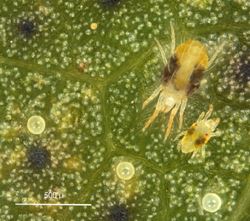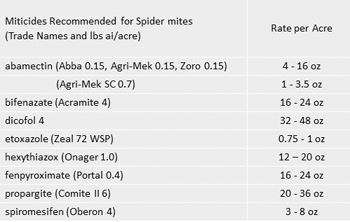Spider Mites And Plant Bugs In Cotton
DR. SCOTT STEWART
JACKSON, TENN.
It’s shaping up to be a busy year managing plant bugs, but I’m also seeing and hearing about spider mites in some fields. I’ve previously discussed insecticide selection for plant bugs. Now that almost all of the cotton is blooming, you should begin focusing on immature plant bugs when you sample. I prefer using a shake sheet (drop cloth) to sample for nymphs, and remember, the treatment threshold during bloom is 3 or more tarnished plant bug per drop.
It’s been hot and relatively dry in at least some fields, so it is not surprising that spider mites are showing in some fields. Spider mites can be a serious pest in situations where cotton is already under drought stress. Infestations often occur on field edges or in isolated spots and then spread across the field. Treatment is recommended when 30 – 50 percent of plants are showing signs of spider mite injury and mites are still present. Our testing in the Midsouth indicates this threshold works well, but it takes some professional judgement when timing applications for spider mites. Weather conditions and the overall severity of infestations play a big role. We have a number of good miticides to choose from (see below). I would not try to get by with insecticides such as dimethoate or bifenthrin (Brigade, Sniper, Fanfare, etc.). They do not provide consistent control and often perform very poorly when applied at this time of year.
Most will elect to start with one of the abamectin products, primarily because they are considerably cheaper than the alternatives. Be aware that there is documentation of spider mite resistance to abamectin in some parts of the Midsouth, so please report any cases of unsatisfactory performance . There have already been a few complaints in Tennessee this year.
Note: There are several generic abamectin products with a formulation of 0.15 lb ai/gallon, including Agri-Mek EC. However, Agri-Mek SC is almost five times more concentrated (0.7 lb ai/gallon). Be sure to read the label carefully and apply the correct rate for the product you select. ∆
DR. SCOTT STEWART: IPM Extension Specialist, University of Tennessee

Spider mites and eggs
Photo courtesy of Angus Catchot, MSU
